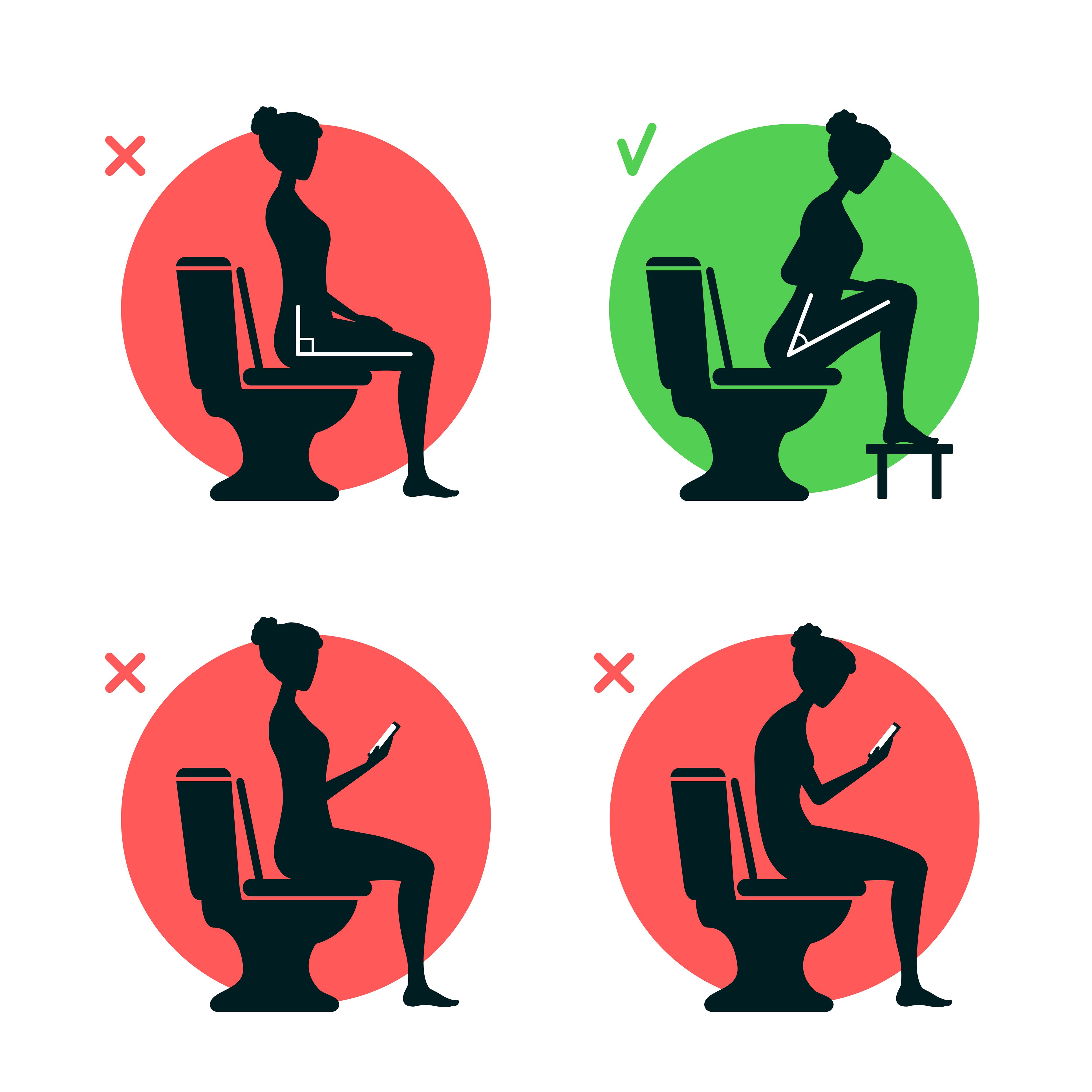Hemorrhoids
Prevention of Hemorrhoids
9/16/2024
Mastering the Art of Sitting: Effective Toilet Positions to Prevent Hemorrhoids
Overview
- Hemorrhoids, a common and uncomfortable condition, can be prevented by adopting effective toilet positions that minimize strain during bowel movements.
- Proper techniques, such as squatting, elevating the knees, and leaning forward, enhance bowel movement efficiency and reduce rectal pressure.
- Additionally, a high-fiber diet and adequate hydration further support digestive health, reducing hemorrhoid discomfort and promoting long-term gastrointestinal well-being.
Introduction
What are hemorrhoids? These are the prevalent and uncomfortable condition experienced by many. Everyone has it, which are clusters of veins located below the mucous membranes in the lowest part of the rectum and anus. They are internal and unnoticed, which can become swollen and distended, leading to discomfort and occasional bleeding.
Preventing hemorrhoids involves implementing effective toilet positions to minimize strain during bowel movements. Read on to learn more.

Why Do We Need to Follow Effective Toilet Positions in Preventing Hemorrhoids?
The angle of the hips and knees enables optimal relaxation of the pelvic floor muscles and rectal canal when seated correctly. This reduces pressure on these areas, minimizing the risk of straining during defecation1.
Adopting the right toilet position helps ensure a more complete evacuation of the bowels. When your body is aligned for a natural passage, the rectal canal is straightened, facilitating the smooth passage of stool. This reduces excessive pushing, further lowering the likelihood of developing hemorrhoids2.

Effective Toilet Positions to Prevent Hemorrhoids
The way you sit on the toilet might seem insignificant, but it has a profound impact on your digestive health. Effective toilet positions facilitate more bowel movements, reducing the risk of hemorrhoids and promoting overall well-being.
Squat
Squatting promotes more efficient bowel movements, relaxing the puborectalis muscle to control the bowel3. It allows for more complete bowel emptying, easing the tension in this muscle. This reduced straining can help prevent constipation, which is a common contributor to hemorrhoids4.
Use a small stool or footrest to elevate your feet and achieve a squatting-like position on a standard toilet2. This brings your knees closer to your chest, mimicking the natural squatting posture. If you experience discomfort, consult a healthcare professional.
Elevated Knees
Similar to squatting, this position helps straighten the colon, promoting a more natural and efficient bowel movement8. To achieve this, use a small, sturdy stool or a squatty stool to elevate your feet2. If neither is available, a stack of books can serve as a temporary solution.
Ensure the stool or books are stable to prevent accidents. The goal is to bring your knees slightly higher than your hips to create a gentle incline6. This relaxed position can alleviate pressure on the rectal veins, enhancing bowel function and overall digestive well-being.
Consistency is key. Incorporating this practice into your daily routine can yield noticeable improvements in your digestive health.
Lean Forward
Leaning forward while on the toilet can help alleviate strain and promote easier bowel movements. This position helps to relax the pelvic floor muscles, which can become tense during bowel movements5.
To do this, simply lean forward from your hips while sitting on the toilet. Rest your hands on your thighs for support. This gentle forward motion helps to open the rectal angle, making it easier for stool to pass. By reducing the need to strain, you can lower the risk of developing hemorrhoids.
While leaning forward may not be as effective as squatting or elevating the feet, it can still provide some relief and help prevent straining. Combining this position with other healthy bowel habits, such as adequate hydration and fiber intake, can further support digestive health and reduce the risk of hemorrhoids6.

Healthy Diet to Further Prevent Hemorrhoids
Incorporating high-fiber foods such as fruits, vegetables, whole grains, and legumes can soften stool and promote regular bowel movements, reducing the strain that exacerbates hemorrhoids9. Adequate hydration is equally important, as it helps maintain stool consistency.
By adopting these dietary habits, individuals can reduce the discomfort associated with hemorrhoids and promote long-term gastrointestinal well-being.

Key Takeaway
These effective toilet positions are often overlooked as a crucial factor in preventing hemorrhoids. By adopting a more natural posture, individuals can reduce strain on the rectal area and promote healthier bowel movements7.
Remember, prevention is key when it comes to hemorrhoids. Incorporating these toilet positions into your daily routine, along with a balanced diet, regular exercise, and adequate hydration, can help reduce your risk of developing this uncomfortable condition.
Take charge of your comfort and well-being with MPFF: Diosmin + Hesperidin (Daflon® 1000). This trusted solution effectively addresses hemorrhoid symptoms, relieves, and improves your quality of life. Experience the difference today.
REFERENCES
- https://www.healthline.com/health/best-position-for-pooping#best-position
- https://www.webmd.com/digestive-disorders/squatty-potty-what-is
- https://www.ncbi.nlm.nih.gov/books/NBK556078/#:~:text=The%20puborectalis%20muscle%20forms%20a,in%20the%20process%20of%20defecation.
- https://www.oregansystem.com/blog/constipation-and-hemorrhoids-how-constipation-can-cause-hemorrhoids/
- https://www.bladderandbowel.org/help-information/resources/toilet-positions/
- https://www.healthline.com/health/exercises-for-hemorrhoids
- https://www.kingedwardvii.co.uk/health-hub/36-ways-to-reduce-piles-haemorrhoids
- https://zoe.com/learn/how-to-poop-when-constipated
2026